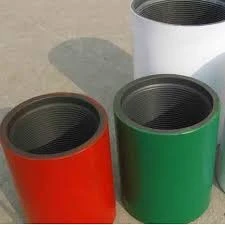- Afrikaans
- Albanian
- Amharic
- Arabic
- Armenian
- Azerbaijani
- Basque
- Belarusian
- Bengali
- Bosnian
- Bulgarian
- Catalan
- Cebuano
- Corsican
- Croatian
- Czech
- Danish
- Dutch
- English
- Esperanto
- Estonian
- Finnish
- French
- Frisian
- Galician
- Georgian
- German
- Greek
- Gujarati
- Haitian Creole
- hausa
- hawaiian
- Hebrew
- Hindi
- Miao
- Hungarian
- Icelandic
- igbo
- Indonesian
- irish
- Italian
- Japanese
- Javanese
- Kannada
- kazakh
- Khmer
- Rwandese
- Korean
- Kurdish
- Kyrgyz
- Lao
- Latin
- Latvian
- Lithuanian
- Luxembourgish
- Macedonian
- Malgashi
- Malay
- Malayalam
- Maltese
- Maori
- Marathi
- Mongolian
- Myanmar
- Nepali
- Norwegian
- Norwegian
- Occitan
- Pashto
- Persian
- Polish
- Portuguese
- Punjabi
- Romanian
- Russian
- Samoan
- Scottish Gaelic
- Serbian
- Sesotho
- Shona
- Sindhi
- Sinhala
- Slovak
- Slovenian
- Somali
- Spanish
- Sundanese
- Swahili
- Swedish
- Tagalog
- Tajik
- Tamil
- Tatar
- Telugu
- Thai
- Turkish
- Turkmen
- Ukrainian
- Urdu
- Uighur
- Uzbek
- Vietnamese
- Welsh
- Bantu
- Yiddish
- Yoruba
- Zulu
casing and tubing connections
Casing and Tubing Connections in Oil and Gas Production
In the oil and gas industry, the integrity and efficiency of drilling operations hinge significantly on the connections made between casing and tubing. These components are not merely structural; they play a critical role in ensuring the safe and effective extraction of hydrocarbons from subsurface formations.
Casing refers to the series of steel pipes that are installed in the wellbore to provide structural support and prevent the collapse of the well. It also serves to isolate the different geological formations and protect underground sources of water from contamination. Tubing, on the other hand, is the pipe through which oil and gas are produced to the surface after extraction. Both casing and tubing systems must be constructed with high-quality materials and designed to withstand extreme conditions, including high pressures and temperatures.
The connections between these pipes are crucial as they need to maintain a seal that can withstand the rigors of the well environment. Connection types vary, but they primarily fall into two categories threaded and welded connections. Threaded connections involve screwing the casing or tubing lengths together and are favored for their ease of installation and the ability to be easily disassembled if required. Welded connections, while generally stronger and more permanent, are more challenging to install and repair.
One of the most common types of threaded connections is the API (American Petroleum Institute) connection, which follows standardized dimensions and performance criteria. The most widely used API connections include buttress, premium, and semi-premium varieties, each designed to cater to specific well conditions and operational requirements. Premium connections, for instance, are intended for high-pressure environments and can tolerate more extreme mechanical and thermal stresses. They often incorporate advanced sealing technologies that enhance their reliability and performance.
casing and tubing connections

Selecting the appropriate casing and tubing connections involves a careful assessment of various factors, including the well's depth, the anticipated pressures and temperatures, the nature of the geological formations, and the types of fluids expected to flow through the pipes
. Engineers utilize simulation technologies and field data to predict performance outcomes and optimize the design of these connections.The maintenance of casing and tubing connections is vital for ensuring the longevity of a well. Operators must regularly inspect connections for signs of wear, corrosion, or any degradation that could compromise the well's integrity. Failure to address these issues can lead to significant operational disruptions, leaks, or even catastrophic well failures.
In recent years, advancements in manufacturing technology and materials science have led to the development of stronger, more resilient casing and tubing connections. Innovations such as corrosion-resistant alloys and advanced coatings have improved the lifespan and safety of these critical components.
In conclusion, casing and tubing connections are essential to the successful operation of oil and gas wells. As the industry continues to evolve, the focus on improving these connections will remain paramount, ensuring safer and more efficient energy production. The reliability of these connections not only impacts operational costs but also plays a significant role in environmental stewardship, underlining the importance of meticulous engineering and regular maintenance in the oil and gas sector.
-
Tubing Pup Joints: Essential Components for Oil and Gas OperationsNewsJul.10,2025
-
Pup Joints: Essential Components for Reliable Drilling OperationsNewsJul.10,2025
-
Pipe Couplings: Connecting Your World EfficientlyNewsJul.10,2025
-
Mastering Oilfield Operations with Quality Tubing and CasingNewsJul.10,2025
-
High-Quality Casing Couplings for Every NeedNewsJul.10,2025
-
Boost Your Drilling Efficiency with Premium Crossover Tools & Seating NipplesNewsJul.10,2025







